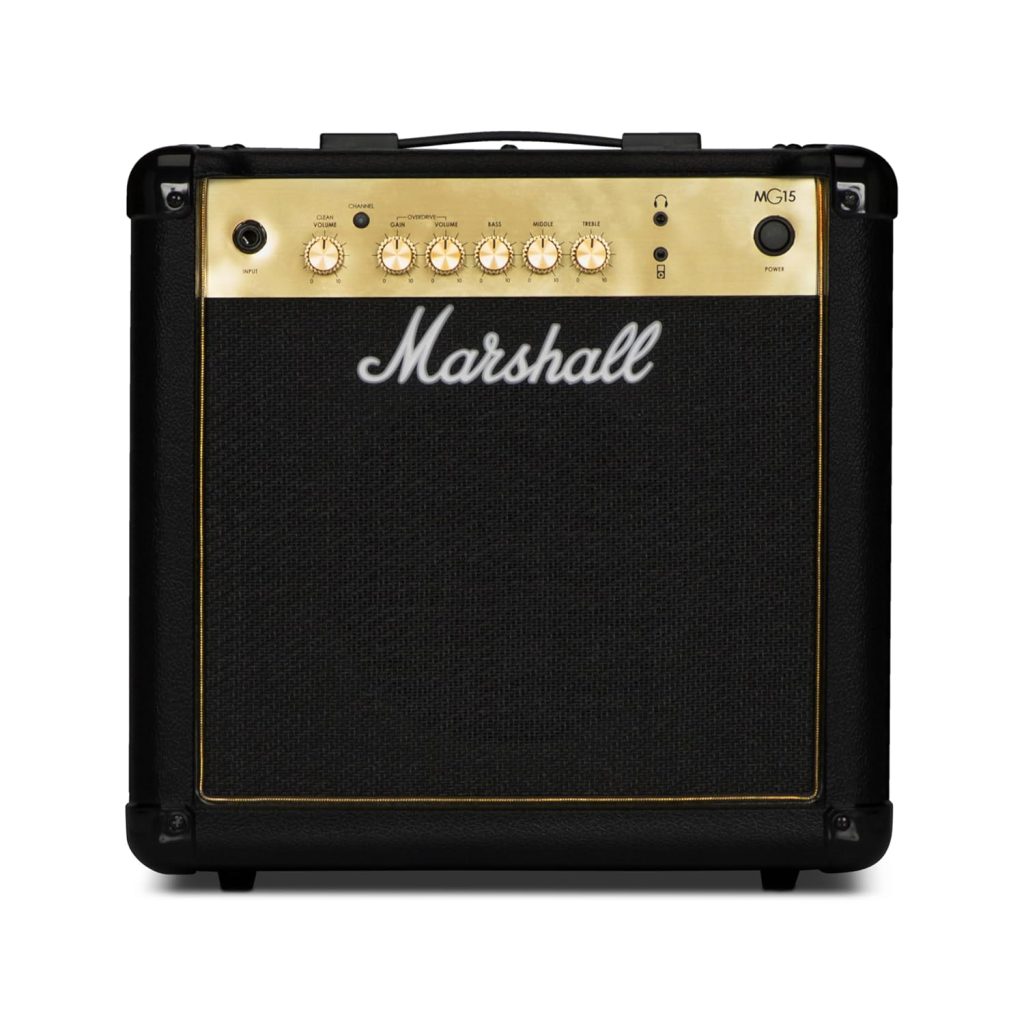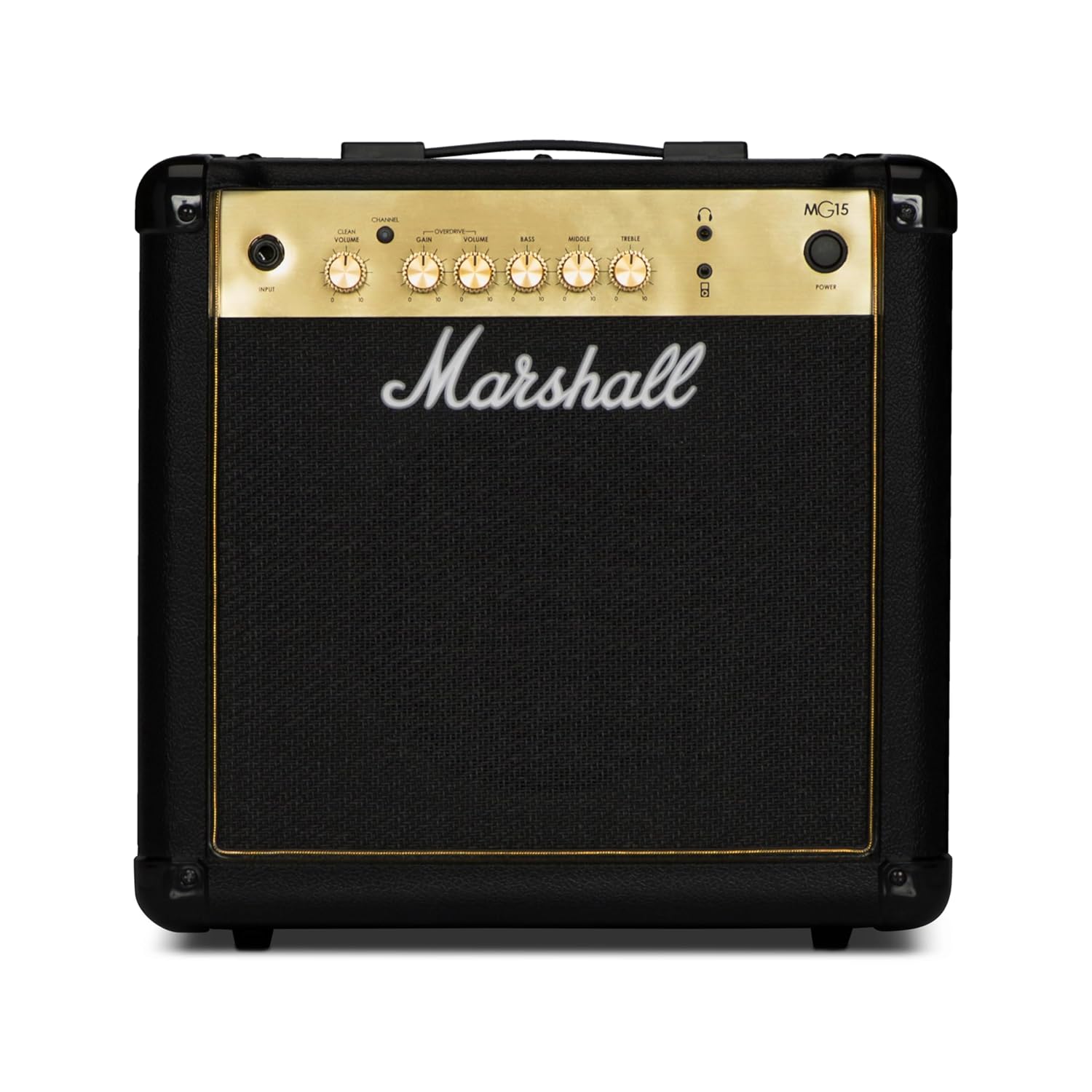Practicing guitar loudly can be a big issue, especially in small apartments or shared spaces. The Marshall MG15G is a popular practice amp, but it can get loud quickly. Keeping volume low is key to not disturbing neighbors or family members. Quiet practice helps you focus better and keeps everyone happy. Luckily, there are simple ways to lower your amp’s noise without sacrificing tone. Let’s explore the best tips to make your practice quieter with your Marshall MG15G.

Understanding Your Marshall MG15G and Its Noise Output
The technical specs of the MG15G and how they influence volume
The Marshall MG15G delivers 15 watts of power through a 10-inch speaker. This small size makes it capable of producing pretty loud sound levels. However, even at lower settings, the amp can still be quite loud. The amp’s overall volume depends on the power output, speaker size, and how loud you set the controls. It’s designed to sound full without needing to crank the volume, but it can still fill a room at high levels.
Acoustic considerations of guitar practice
Your guitar and playing style also affect volume. Heavier pick attacks and thicker strings tend to produce more noise. Playing softly or fingerpicking generates less sound than heavy strumming. Even the type of guitar you use matters—acoustic guitars sound louder than electric, but electric guitars with a loud amp can be heard from miles away. Small adjustments to how you attack the strings can cut down noise a lot.
Practical Techniques to Reduce Noise During Practice
Use of the Amp’s Volume and Gain Controls
Start with your amp’s volume low. Set it around 3 or 4 out of 10 to get a balanced tone. Avoid turning it up too high, which makes the sound more diffuse and harder to control. Use the gain control carefully—less gain means cleaner sound at lower volumes. Finding that sweet spot where tone is still great but volume is manageable takes some experimenting.
Employing the Master Volume and EQ Settings
Your MG15G has a master volume knob—use it to fine-tune overall loudness. Adjust the bass, mid, and treble EQ to shape your tone. Cutting treble slightly can reduce harshness and make the sound less piercing. Boosting mids adds punch without increasing volume. Play with these settings to find a tone you love that doesn’t require loud volume.
Incorporating Practice Tools and Accessories
Headphones are your best friends here. Use the amp’s headphone jack for silent practice. If you want to keep playing through the amp but with less noise, try a volume reducer or attenuator. Some amps also have “power soak” or “quiet” modes that reduce output power. These features cut volume while preserving tone quality, perfect for late-night sessions.
Advanced Methods to Minimize Noise and Disturbance
Using Sound Dampening and Isolation Techniques
Place your amp in a corner or against a wall to block sound spreading. Add sound-absorbing foam panels or thick curtains nearby. These materials soak up sound waves and prevent leakage. Building a small practice booth or using a closet with blankets can turn your space into a quiet zone. The goal is to contain the noise indoors.
Playing Techniques to Lower Practice Volume
Mute strings with your fretting hand when not playing. Use softer picking techniques—fingerstyle or gentle strumming. Focus on scales, chords, and exercises that require minimal amp engagement. Playing with your guitar’s volume knob down can also help reduce output without changing your playing style.
External Equipment Solutions
Invest in a headphone amplifier that connects to your guitar or amp. Top-quality pedals can act as volume reducers or attenuators—plug them between your guitar and the amp. Digital modeling pedals often have silent practice modes that emulate hundreds of amps and effects quietly. These options help you keep your sound private and quiet.
Best Practices for Quiet Practice in Different Environments
Apartment or shared living spaces
Pick practice hours when neighbors are less likely to complain, usually late morning or early evening. Talk to neighbors and explain your schedule—they’ll appreciate your thoughtfulness. Using headphones or quiet setups can make a big difference in keeping the peace.
Home studio setups
Create a dedicated space with good soundproofing. Use thick carpets, wall panels, and door seals to block sound leaks. Organizing your space for sound absorption makes your practice quieter without sacrificing sound quality.
Live performance or band practice considerations
Send a direct line from your guitar to the PA or mixer to hear your sound via monitors. Encourage your bandmates to keep volume levels moderate. Using in-ear monitors during band practice can make loud amps a thing of the past, allowing everyone to play at a comfortable volume.
Conclusion: Achieving Effective Quiet Practice with Your Marshall MG15G
The key to quieter practice lies in proper amp settings, good accessories, technique, and environment. Start by lowering your volume and adjusting EQ to shape your tone. Use headphones whenever possible. Placement and room setup are crucial too. Don’t be afraid to try different methods—what works for one person might not work for another.
Quiet practice doesn’t mean sacrificing progress. With a little effort, you can stay focused, improve your skills, and keep peace with your neighbors. Experiment and find the perfect setup that suits your space and needs. Happy practicing!
Additional Resources
- Guide to soundproofing your home music practice space
- Best headphones and silent practice gear for guitar players
- Tips from guitar pros on maintaining good neighbor relations during practice



